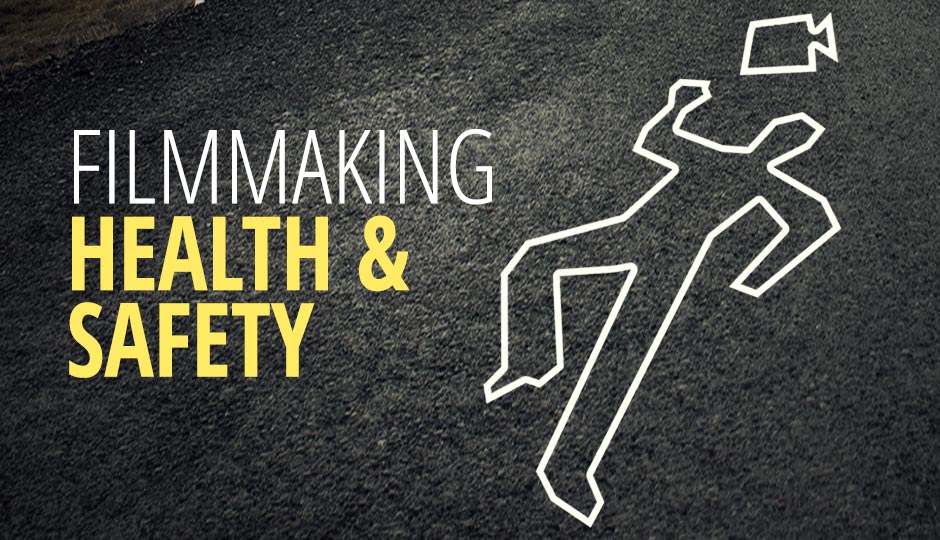
SAFETY FIRST : FILM SHOOTING
Jul 04 2019
Safety First
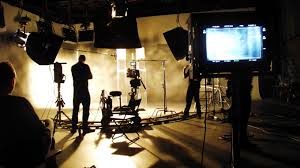
When filming, people have many things on their minds, things can get rushed, and risks can increase. Even simple things can become dangerous because this is not an ordinary situation.
The way to stay safe is to look at each shooting set up or location individually and think of what exactly could go wrong. This is called a risk assessment, and can be an excellent exercise.
It’s a three step process
- Identify all the hazards
- Evaluate the risks
- Identify measures to control the risks.
Weather
Extremes of weather are one commonly overlooked hazard. If you are filming outside all day, it is essential to make sure the crew are dressed appropriately. A lot of the time you may be standing around and people will get cold very quickly even in what seems quite mild weather. Layers of clothes are best, and get everyone to bring a waterproof and a woolly hat – they keep out wind as well as rain and are invaluable.
Sunburn and heatstroke are other outdoor hazards. Always have high protection sunscreen on hand. and make sure lots of water is available to drink…and have Electral powder in case of dehyderation.
Film making is done almost in tough conditions, it is always advisable to have a portable fire extinguish sprayers at a reachable distance at shooting floor to get protected from fire accidents.
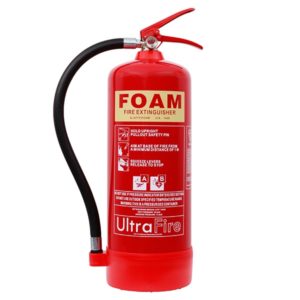
while shooting technicians should wear pollution masks or simple surgical Masks in order to get rid of allergy related issues which may cause serious health issues.
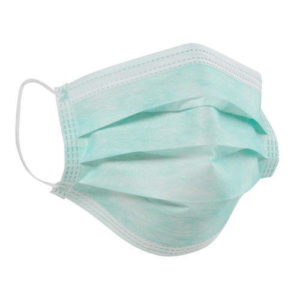
Insurance
Importance of film production insurance is a staple in filmmaking. A good film insurance policy protects producers, film makers, film crew and all the filming location from liabilty.
Special Make ups and Costumes
ARE COSTUMES AND MAKEUP AN OCCUPATIONAL HEALTH AND SAFETY CONCERN?
The added body burden of costumes and makeup can prevent the body from shedding heat. When actors are in costume all the time, even when they sweat, it’s not adequately cooling the body down. In those instances, we have to take typical heat stress prevention measures: having the actors spend 25 percent of the time in shade and making at least a liter of water available at all times. On one set some actors have to wear two extremely tight rubber costume.
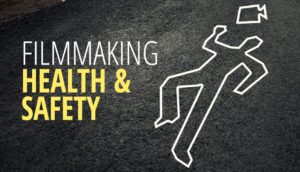
Important to follow
*Location and electrical safety is very important. DoPs are always under pressure to get the job done early.
*Cinematographer should always be careful while getting in and out of the crane, he should reassure with the grip personals to balance the counter weight before his act of getting in /out of crane.
*It is very important to check the power supply fuse rating when using lights at domestic supply.
*While working with public both their safety and camera crew safety is important.
*While working in public environments good will is very important.
*Care and consideration should be there while shooting at live location – homes, offices like not leaving tape marks at the wall. Assure that it is clean while wrapping up the shoot.
*Always shoot in live location with proper permission from the authorities (permission job will be done by production manager), If it has to be shot in a candid way,minimize camera crew members as much as possible.
*Always carry basic medical kit.
* Assistant cameraman should be careful while handling lights, especially when raising the height of light.
Things that are serious and concern
Laser Light – These days most of the people in the shooting floor use laser light torches to indicate marks, command.
Recent study has proved that pointing Laser light towards Camera affects the ‘SENSOR’… Lasers emit concentrated beams of light, which can heat up sensitive surfaces (like the eye’s retina) and cause damage. Camera sensors are susceptible to damage, similar to the human eye.
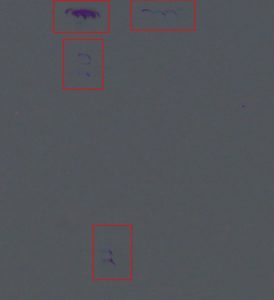
Above is a picture of Image sensor damaged by Laser light.
SICA advises not to encourage many people using Laser light torches..only responsible technician should use without pointing towards Camera to avoid severe damage to IMAGE SENSOR.
Monitor
Those were days where film shooting proceedings depended solely on Cinematographer as he was the first audience for the Director who judges every shot filmed viewing through the camera viewfinder ..those days monitor was not there.
Now a days Monitors are far most important tool like a camera in a film shooting. There are two different monitors one for Cinematographer another for Director.
Cinematographers monitor is calibrated for his technical judgement like exposure, color, frame guide and Even menu navigation.
Director’s Monitor where almost gets crowded to see the shot filmed….but that really a huge distraction. Director who needs personal space to connect with the shot and judge what he really wants.
The cable from the monitor leads straight to the camera which is really bit far away…the unnecessary crowd near monitor will lead to stamp the cable wire that will lead to disconnection, even some time it may influence camera setup to fall down.
It should be practice that Monitor is for Director and Cinematographer…others should refrain from being near to it.
CJ Rajkumar
Author/Cinematographer
